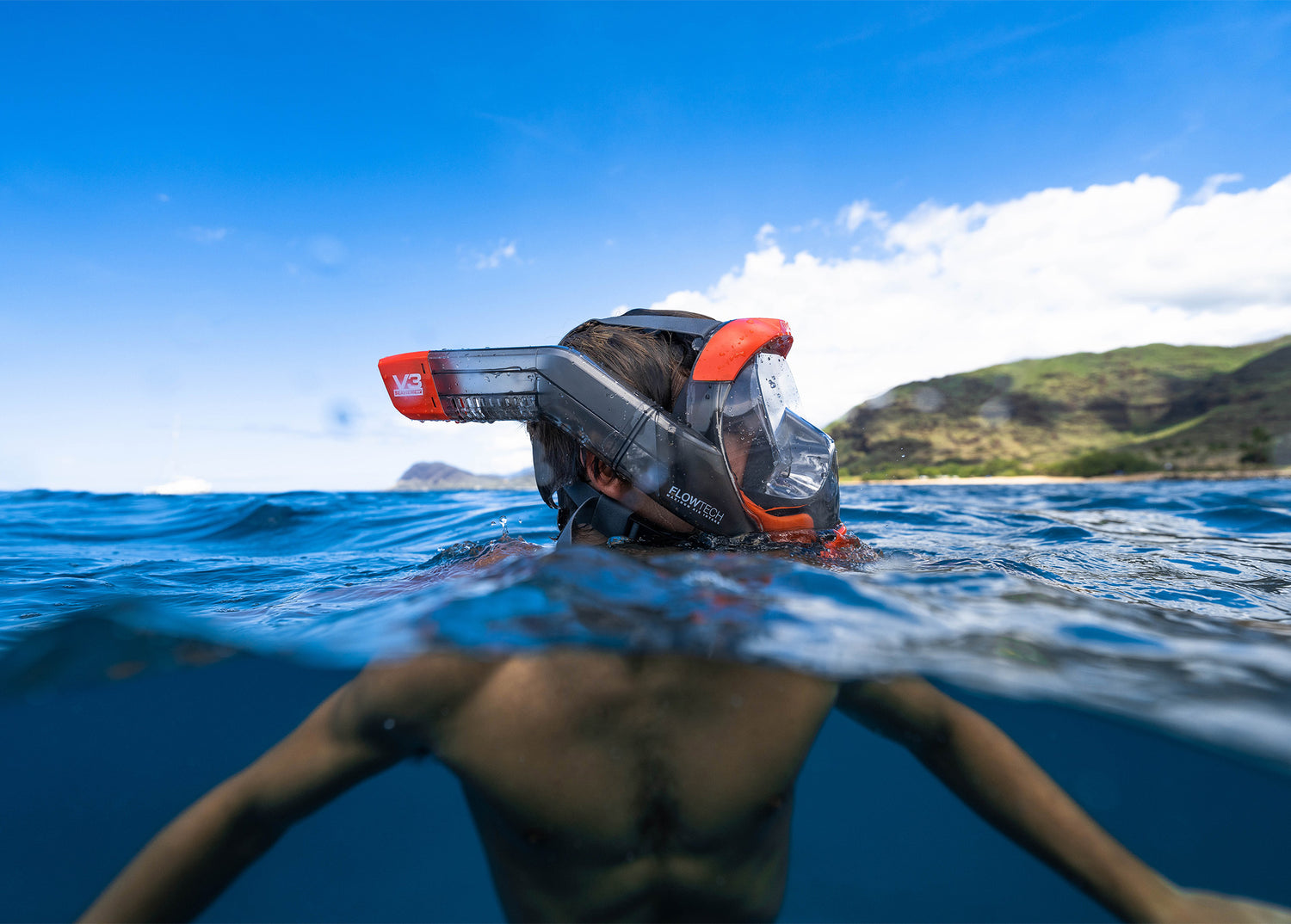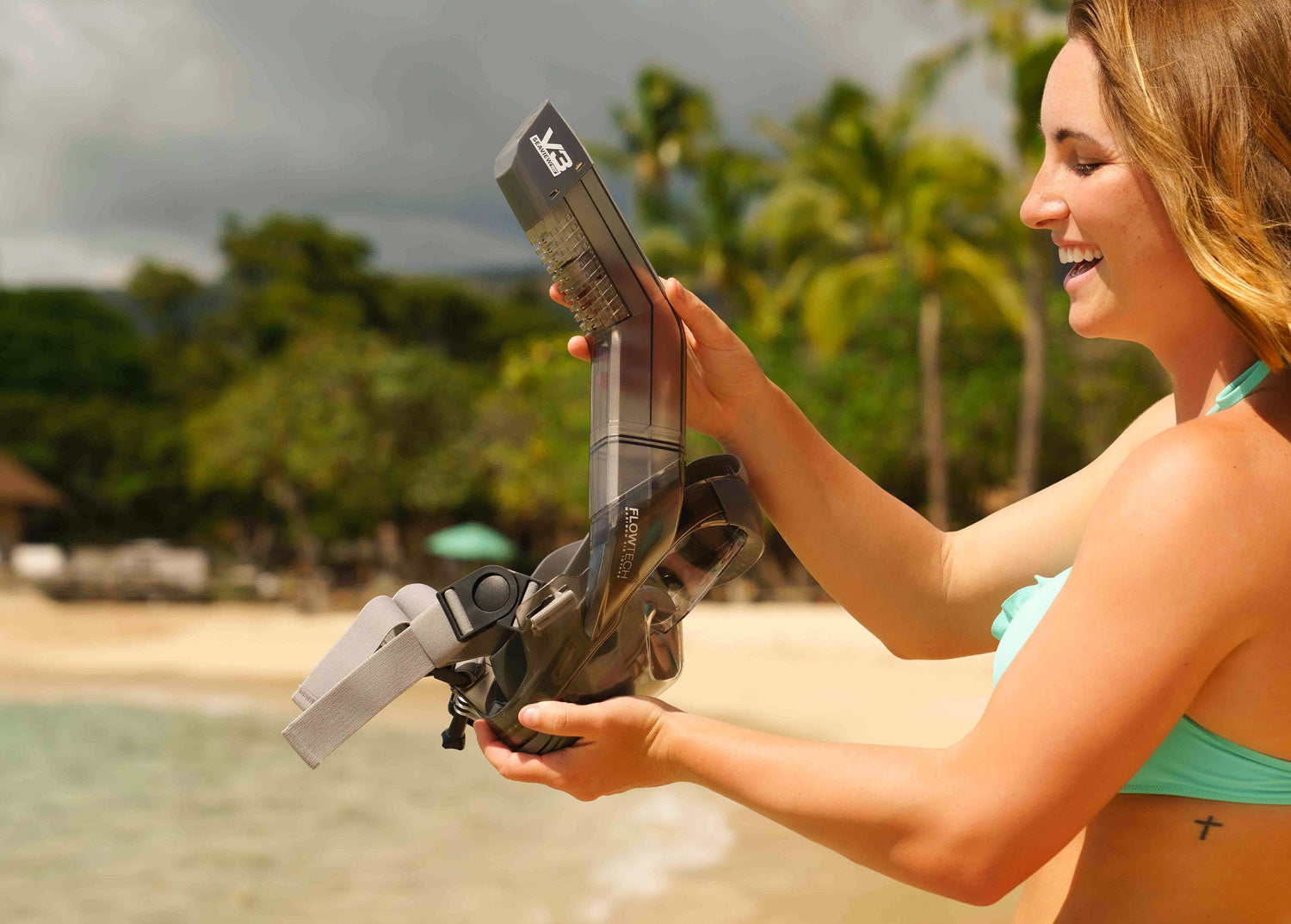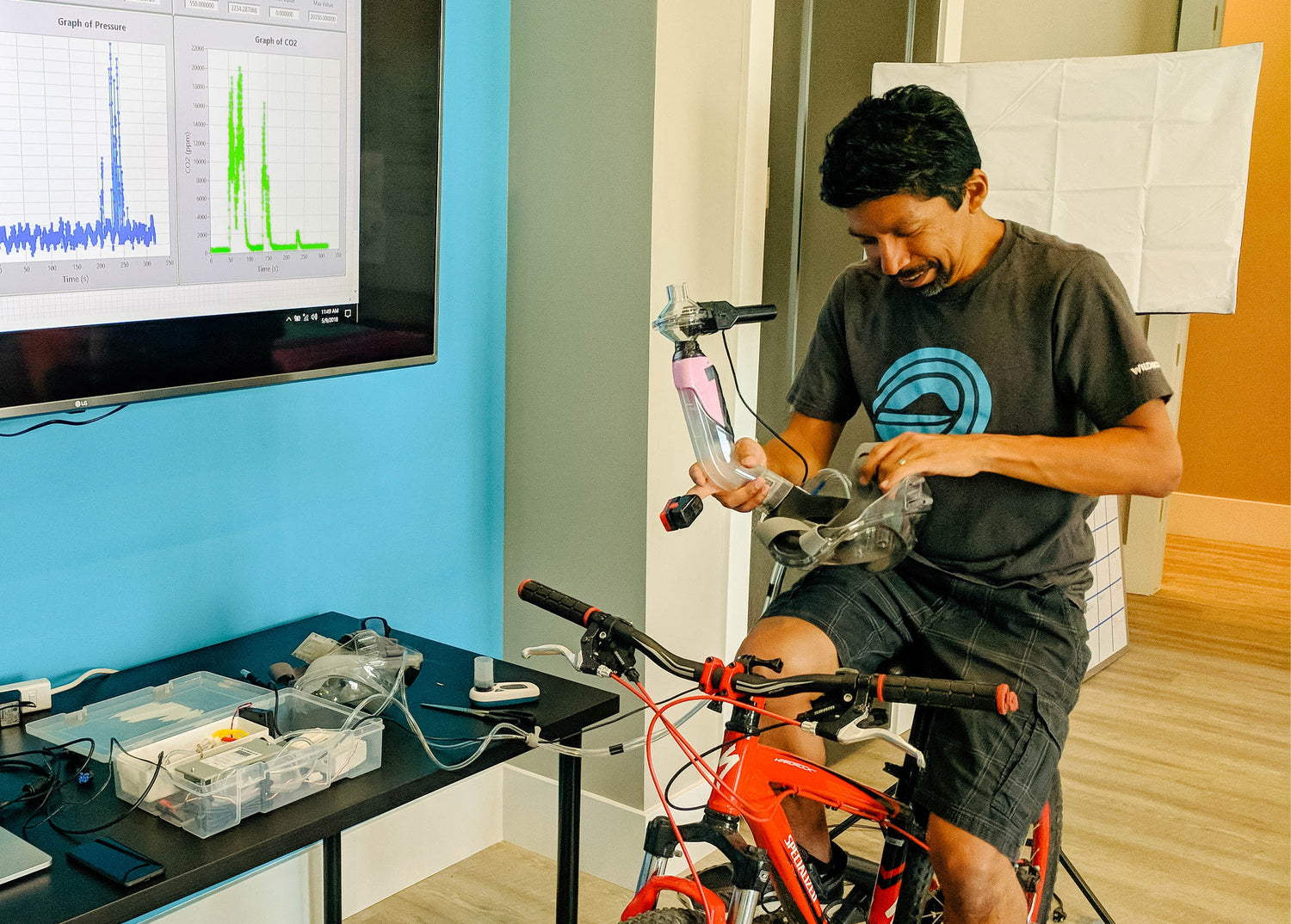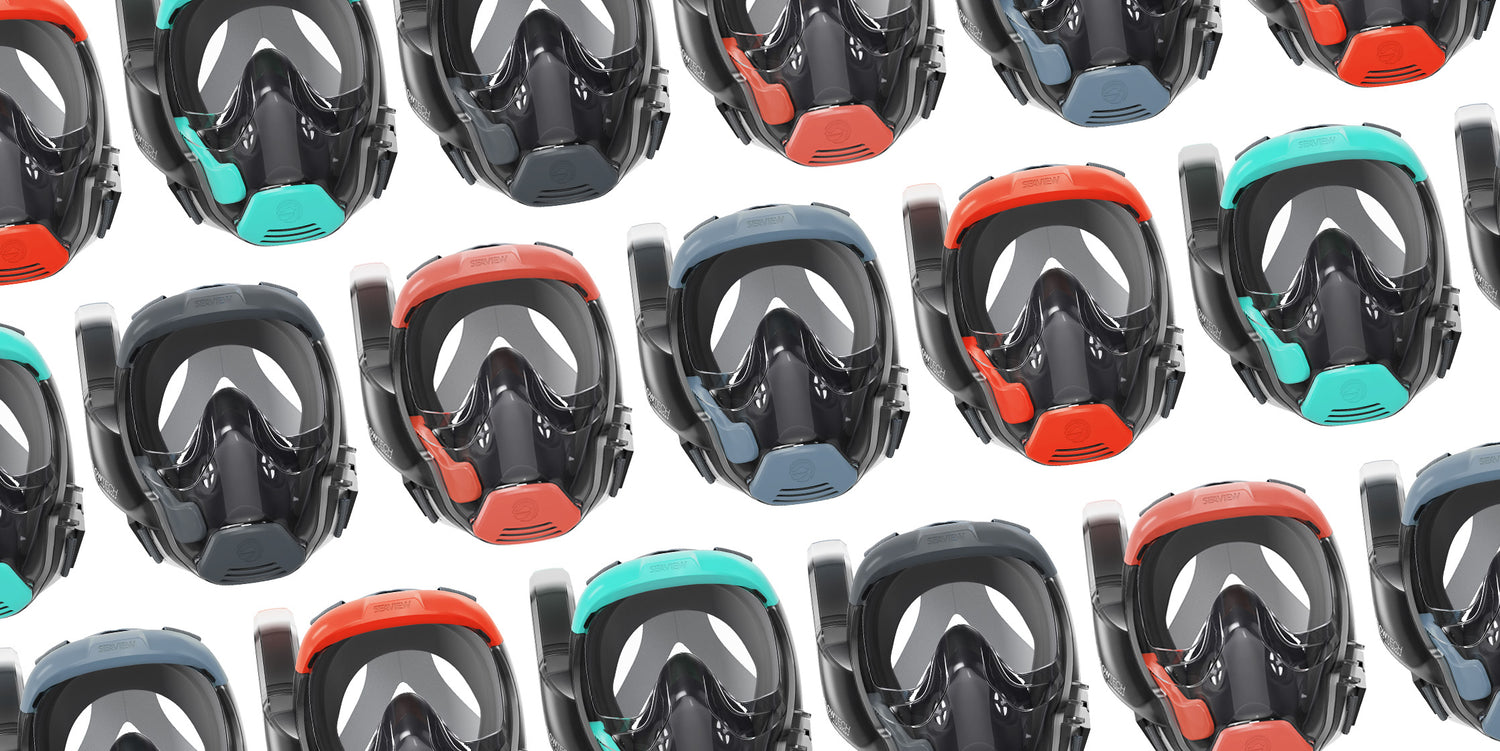V3 Safety & Design
Snorkeling is a fun and memorable experience! Still, it's important to be aware of the risks and take proper precautions to ensure your safety. By choosing the Seaview 180 V3 full face snorkel mask powered by Flowtech technology, you can have peace of mind and enjoy viewing the underwater world with confidence. Learn more below.

OUR APPROACH
There are no official design standards yet for full face snorkel masks. Seaview took inspiration from scuba equipment standards like EN 250 and workplace respirator standards from OSHA and NIOSH to guide design and testing processes. Seaview worked with 3rd parties like Dive Lab to gather and analyze objective data on breathability and CO2. In-house testing and computational fluid dynamics were used to further re-inforce the safety of the design.
CO2 & WORK OF BREATHING SAFETY
Two metrics to understand when looking at snorkeling equipment are CO2 exposure and Work of Breathing, or WOB. WOB meaures how much effort is required to breathe in a snorkel.

CO2 VS. ROPE
A Hawaii study found that CO2 buildup is not a significant factor in snorkel-related accidents, but rather by a phenomenon called Rapid Onset Pulmonary Edema (ROPE). Breathing through a narrow tube can cause negative pressure in the lungs, which draws fluid into the air spaces and reduces the amount of oxygen intake into the bloodstream. This can lead to shortness of breath and critically reduced blood oxygen levels.

INTENTIONALLY DESIGNED
We integrated patented Flowtech with the new V3 mask. Flowtech enables greater airflow and lower pressure. This helps reduce the chance of ROPE, increase a swimmer's confidence, and provide the safest experience possible. By opening the ports and routing air in this unique way, Seaview 180 V3 is designed to be the top performing full face mask on the market. In third party testing, it performs up to 600% more efficiently when breathing compared to other leading full face masks.
While cases of ROPE are rare, it is important to consider the impact of WOB and breathing efficiency in your snorkeling safety. Other factors such as age, fitness level, and pre-existing health conditions may also contribute to ROPE. If you have questions about your own risk, consult your doctor prior to your snorkeling trip.

IN-HOUSE METHODOLOGY
Seaview developed a Beta machine that can directly measure tidal flow from respiration. Additionally, Seaview also used computational fluid dynamics (CFD) simulations to verify physical testing methods and results. It should be noted that while OSHA and NIOSH published safety guidelines for respirators and other personal protective equipment, they do not have specific standards for snorkeling equipment. Still these guidelines can be helpful in assessing the safety of a breathing device such as a full face snorkel.

COMPUTATIONAL FLUID DYNAMICS (CFD) TESTING
Early in the design and development phase of V3, Seaview's development team tested masks for CO2 residuals through a computational fluid dynamics simulation which showed that the masks fell within the OSHA standard. This testing helped Seaview assure that concerns of CO2 and WOB were properly addressed. Both CFD and physical testing results were similar, helping validate instrumentation and testing methods developed by Seaview.

THIRD PARTY TESTING WITH DIVELAB
Seaview collaborated with Divelab to test for work of breath, flow rate, CO2 and the overall safety of the new V3 mask. Divelab Inc is a company that specializes in the design and testing of scuba diving equipment, including traditional snorkeling equipment. Divelab has the capability to conduct a wide range of testing services to ensure that equipment such as snorkel gear meets industry standards and is safe for use. Their testing services include pressure testing, flow rate testing and CO2 level testing. They use industry standards such as EN250 and EN 13274-6 as a guide for their testing procedures.
DIVELAB TESTING RESULTS
CARBON DIOXIDE
CO2 time average results show exposure rate of less than 3% as specified by OSHA as the maximum exposure limit for 15 minutes. As Exposure increases after 3% over time a person can begin to experience symptoms such as increased breathing, headaches and disorientation. V3 is rated at ~2.5% and demonstrates that CO2 levels fall within safe levels of exposure.
WORK OF BREATHING
Per OSHA standards, the pressure required for Work of breathing is to be <3.0 joules per liter. V3 is rated at 0.72 joules per liter which tested better than each full face mask it was tested against.


